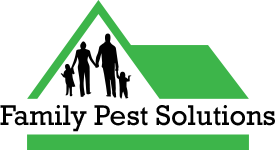
As the weather warms up and outdoor activities beckon, it’s essential for New Yorkers to be aware of the lurking threat posed by ticks. These tiny arachnids may seem insignificant, but their potential to transmit diseases makes them a significant concern for public health.
1. Tick Species in New York:
New York is home to several species of ticks, with the most common being the black-legged tick (also known as the deer tick), the American dog tick, and the lone star tick. Each species has its own habitat preferences and may carry different diseases, making it crucial to understand their biology and behavior.
2. Lyme Disease Risk:
Lyme disease is the most well-known tick-borne illness in New York and can have serious health consequences if left untreated. Black-legged ticks are the primary vectors of Lyme disease bacteria (Borrelia burgdorferi), and they are prevalent in wooded and grassy areas throughout the state. Being aware of Lyme disease risk areas and adopting preventive measures can help reduce the chances of infection.
3. Tick Life Cycle:
Ticks have a complex life cycle that typically involves four stages: egg, larva, nymph, and adult. After hatching from eggs, ticks must feed on blood at each stage to progress to the next stage of development. Understanding the life cycle of ticks is essential for implementing effective control strategies and interrupting their reproductive cycle.
4. Seasonal Activity:
Ticks are most active during the warmer months, typically from spring through fall. However, they can remain active during mild winter days, especially in wooded or brushy areas. Peak tick activity in New York usually occurs from April to October, but it’s crucial to remain vigilant year-round, especially when engaging in outdoor activities.
5. Tick-Borne Diseases Beyond Lyme:
While Lyme disease is the most prevalent tick-borne illness in New York, ticks can also transmit other diseases such as anaplasmosis, babesiosis, and Powassan virus. These diseases may have different symptoms and treatment options, so it’s essential to be aware of their presence and seek medical attention if you experience any unusual symptoms after a tick bite.
6. Tick Prevention Tips:
Preventing tick bites is key to reducing the risk of tick-borne illnesses. Some practical tips for tick prevention include:
- Wearing long sleeves, pants, and closed-toe shoes when spending time outdoors.
- Using insect repellents containing DEET or permethrin on exposed skin and clothing.
- Conducting thorough tick checks on yourself, your children, and pets after outdoor activities.
- Creating a tick-safe environment around your home by keeping grass trimmed and removing leaf litter and brush.
Remember, awareness and proactive measures are key to protecting yourself and your family from the dangers of ticks in New York. To help protect your home environment, reach out to Family Pest Solutions. We service the greater Capital District area including Albany Schenectady Saratoga and Rensselaer counties.
